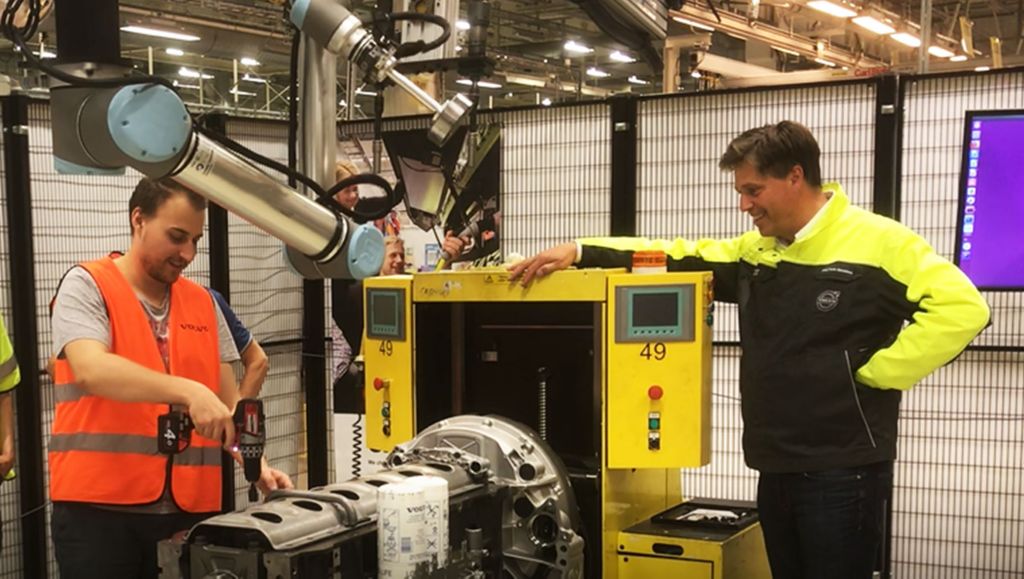How can robot and human collaborate in the best way?


“We know that the interaction between human and robot will be even more common in the future of manufacturing and logistics. By conducting research on this together with universities we make sure that we are aware of new findings and able to use new technologies when they are mature enough,” says Per-Lage Götvall,” RnD engineer and chairman of the CRS-lab Advisory board.
The Volvo Collaborative Robot Systems Laboratory is a partnership with selected academic partners in a joint CyberPhysical laboratory. In this Collaborative Robot Systems Laboratory, Volvo Group presents the research demands based on the business needs to cope with the future challenges.
“In terms of equipment in our manufacturing processes, we can for example foresee both Collaborative robots (Cobots) and Autonomous Transporting Vehicles (ATVs), where ATVs will be more commonly seen in our plants. Cobots are robots which are intended to work alongside or even together with human operators. They can be used to introduce greater flexibility into manufacturing processes and relieve the workload associated with exerting, repetitive operations,” says Per-Lage.

In the CRS-lab, where Chalmers University of Technology, University of Skövde, Örebro University and Mälardalens Högskola (MDH) are members, each party represents its own Center of Excellence. However, by using CRS-lab common tools and equipment in joint research projects, we are able to push the technology edge more efficiently by effectively sharing acquired knowledge in between members.
Petter Falkman, Associate Professor, Electrical engineering at Chalmers says “We have today an exhaustive research collaboration with Volvo Group and a joint cyber-physical laboratory gives us great possibilities to develop full-scale prototypes at Chalmers and being able to test and evaluate these in full scale environments.”